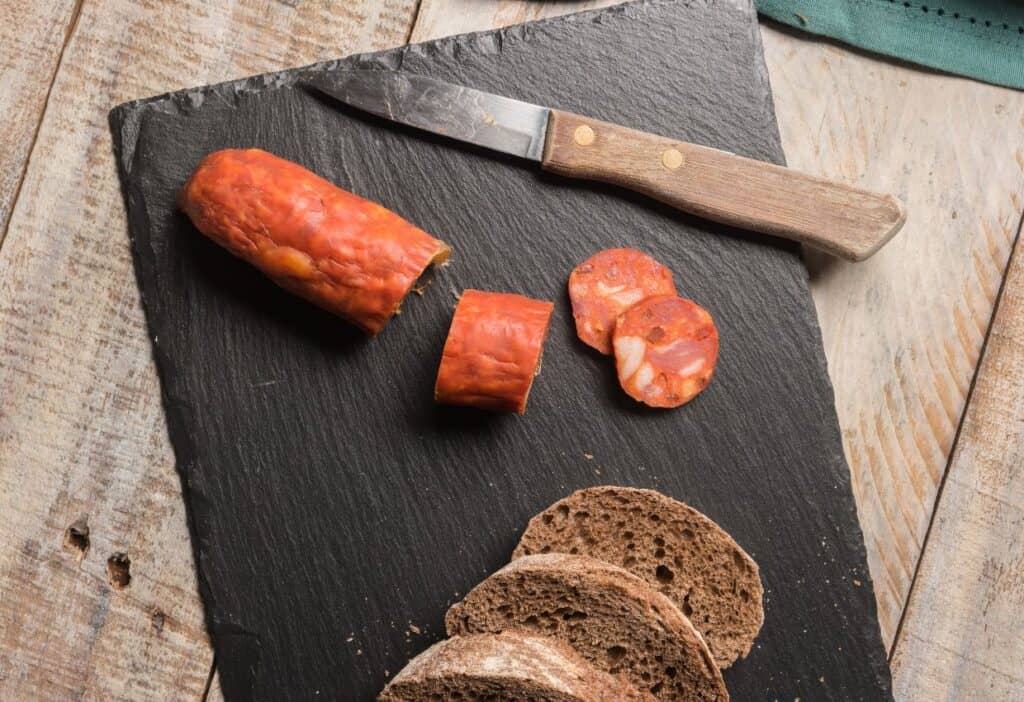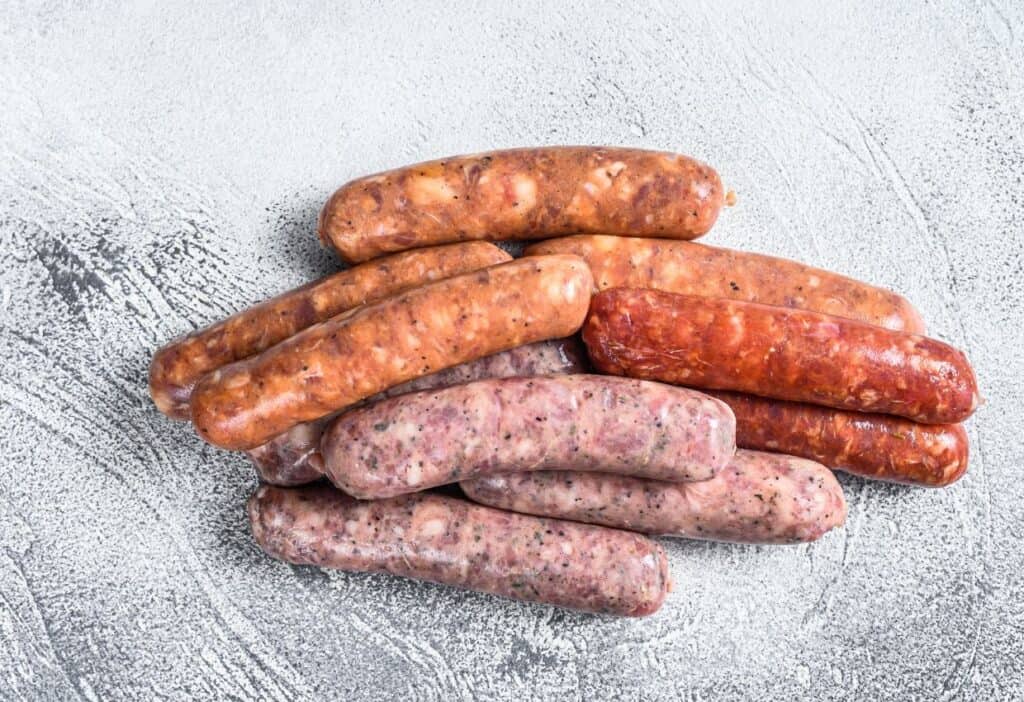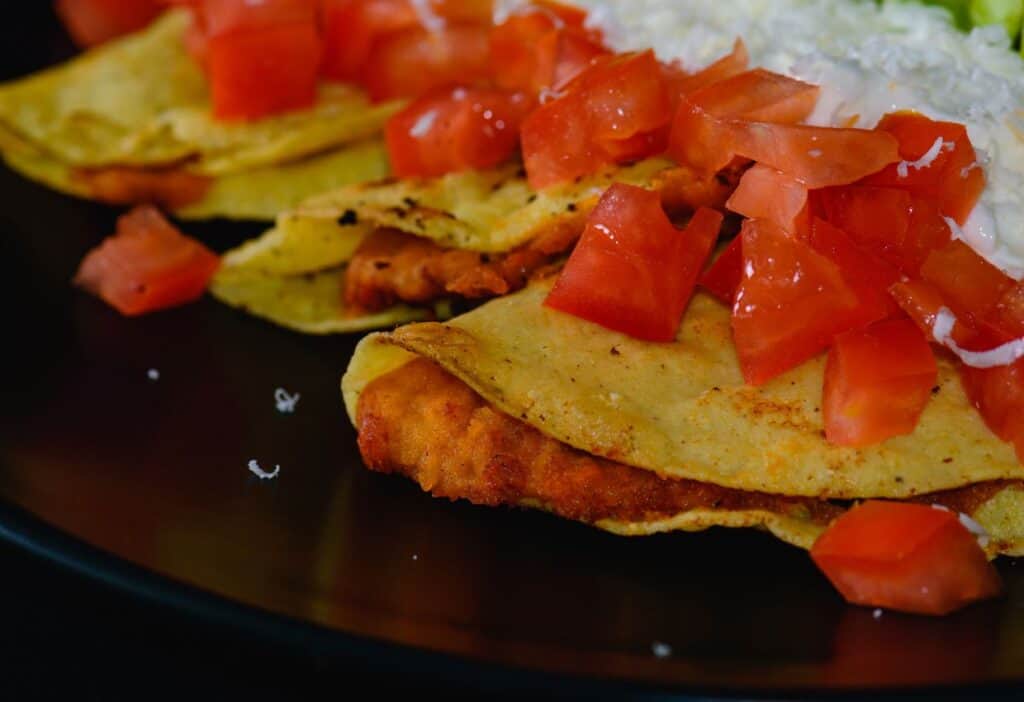Inspired by vibrant Spanish traditions and spirited Mexican flair, this mouthwatering sausage is as delicious as it is versatile. Get comfortable with this sizzling and flavorful sausage cherished in Spanish and Mexican cuisines. You’ll master the art of chorizo cookery and be a pro in no time.

What is chorizo?
Chorizo, a popular sausage originally hailing from Spain and Portugal, boasts a tantalizing blend of ground pork and a medley of spices that creates its distinctively bold flavor. It’s just as popular in Mexico, where it evolved to include distinctively Latin American seasoning. This Mexican-style chorizo is the one you find most often in US supermarkets.
Spanish chorizo is dry-cured with smoked paprika, so you don’t need to cook it. Mexican chorizo, on the other hand, is raw and seasoned with chili peppers.

What meat is in chorizo?
Chorizo is traditionally made with pork, though regional variations may incorporate beef or even wild game. This coarsely ground meat gives chorizo its distinctive texture and enticing character.
More recently, you can find alternatives that provide diverse options for individuals with different dietary preferences and restrictions.
Those options range from chicken, turkey and beef chorizo, for those who don’t eat pork, to vegan chorizo. Vegan chorizo may include anything from mushrooms to tofu, seitan or even jackfruit.
“Although we eat chicken or vegan chorizo (instead of the “regular” version) due to food allergies at our house, our favorite way to eat it is with scrambled eggs. It’s a fast and easy way to add a little more protein and amazing flavor to an otherwise basic breakfast dish.”
— Sage Scott, Sage Alpha Gal
How spicy is chorizo?
Chorizo’s spiciness varies, running the full spectrum from mild to fiery.
Spanish chorizo offers a milder zest, while Mexican chorizo often exudes a fiery kick. There are mild versions to cater to every palate, and removing the casing can tame the heat.

The package always labels the spice level, so be sure to check. If you purchase directly from the butcher, they can advise you, as well.
Where to find chorizo
Chorizo tends to be fairly widely available. You can generally find it at local grocery stores, specialty meat markets, butcher shops or Latin American supermarkets.
The Latin American supermarkets tend to have the best selection and often the freshest chorizo, so shop there if you can.
Why you shouldn’t boil chorizo first
Resist the temptation to boil chorizo before you cook it. While many sausages like bratwurst benefit from boiling, chorizo does not.
Boiling may dull its flavors as they leach into the water, and it may also change its texture. It also causes the fat in the sausage to separate, which creates greasy chorizo.
Instead, go directly to your main cooking technique, such as pan frying, grilling or sautéing.
Note again that the chorizo from Spain is already cooked, so this refers only to the raw chorizo common in Mexico.
Should you remove the casing from chorizo?
Chorizo is encased in a thin layer of natural or synthetic casing that is edible and safe to consume. Whether you remove the casing or not depends on personal preference and your cooking method.
Note that vegan chorizo tends to come in a plastic casing that is not edible. You need to remove this before cooking vegan chorizo.
Leaving the casing intact can add extra flavor and juiciness to the dish, as it prevents the fat and juices from escaping during cooking. The casing also helps to hold the sausage together when you grill it or plan to serve it sliced with your dish.
If you plan to use it as a crumbled ingredient in dishes, you want to remove the casing before you cook it. It can also help reduce the overall fat content in the final dish.
How to cook it
Chorizo can be cooked in multiple ways. The three main ways to enjoy its delectable flavors quickly and easily are pan frying, grilling or sautéing.
Pan fry it
One of the most classic ways to cook chorizo is by sizzling the chorizo link in a skillet until it’s beautifully browned and slightly crispy. This method allows the rich and full-bodied flavors of the chorizo to fully develop.
The rendered fat from the chorizo also adds a depth of flavor to the surrounding ingredients, making it an excellent choice for adding a bold kick to your recipes.
Set your skillet over medium-high heat and sizzle the chorizo for about five to seven minutes or until it’s browned and slightly crispy.
Grill it
For those who love a smoky and charred taste, grilling chorizo is the way to go. Simply place the chorizo links on a preheated grill and let them cook to perfection.
The heat of the grill infuses the chorizo with a tantalizing smoky allure. Grilled chorizo makes a fantastic addition to barbecues or outdoor gatherings, and it can be served on its own as a flavorful appetizer or added to various dishes for an extra burst of smoky goodness.
Preheat your grill to medium-high heat, and cook the chorizo links for approximately 10 to 12 minutes, turning them occasionally.
Sauté it
If you prefer a quick and effortless way to prepare chorizo, sauté chorizo slices or the crumbled sausage removed from the casing in a pan with a drizzle of olive oil.
As the chorizo cooks, its natural oils release, creating a rich and flavorful base for your dish. Sliced chorizo edges of the chorizo slices caramelize beautifully, adding a touch of sweetness that perfectly complements its savory and spicy profile.
Heat a pan with a dash of olive oil over medium heat and sauté the chorizo slices for four to five minutes, caramelizing the edges for a burst of flavors.
What to serve with it
Pair your delectably cooked chorizo with delightful accompaniments, such as:
- Tacos: Instead of traditional ground beef, enjoy chorizo-stuffed tortillas with salsa, avocado and cilantro.
- Pasta: Elevate your pasta dishes with the addition of savory chorizo. It adds a delightful kick and protein to everything from a simple spaghetti and sauce to homemade pasta with vodka sauce.
- Breakfast Burritos: Chorizo-infused breakfast burritos with eggs, cheese and your favorite veggies are a great way to start your mornings.

“I love using chorizo in Mexican cooking because it adds so much flavor. Even just a small amount of chorizo can add complexity and depth to a dish. I pan-fry it with shrimp for tacos, brown it and sprinkle it over chilaquiles or add it to ground turkey meat with taco seasonings for a lighter filling for crunchy tacos.”
— Robin Donovan, All Ways Delicious
Conclusion
Now that you’ve unlocked the secrets of chorizo and embraced its fiery charm, you’re equipped to embark on a flavorful culinary adventure. From mastering the cooking techniques to understanding its spicy allure, you can confidently explore the world of Spanish and Mexican cuisines with chorizo as your trusted companion.
Let the flavors ignite and the sizzling excitement continue as you create mouthwatering dishes that pay homage to this beloved ingredient.
Michelle Price is a food and travel writer at Honest and Truly who almost has an empty nest. She loves to provide both the inspiration and the confidence you need to help get you into the kitchen and on the road to enjoy new flavors and experiences.